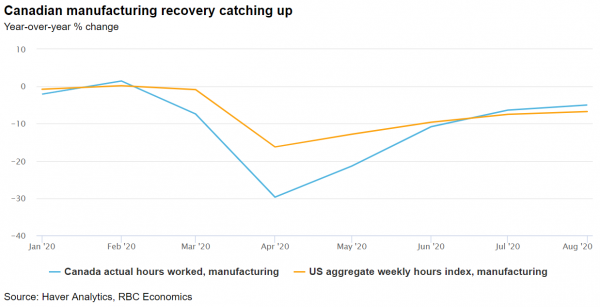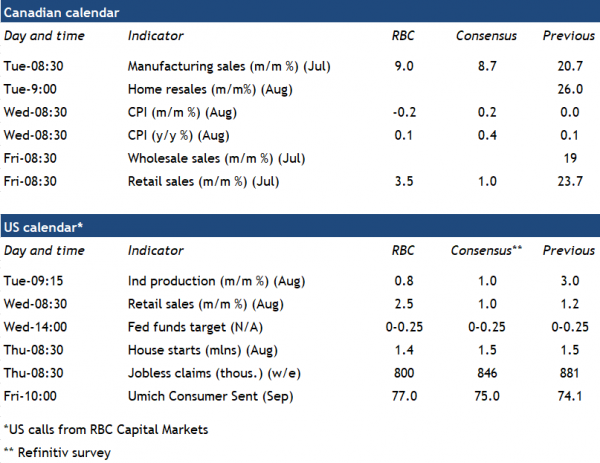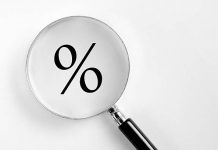Canada’s already blazing housing markets look to have heated up even more in August. Early market reports point to another exceptionally strong month of resales, after the surge in July to 30% above year-ago levels. Pent-up demand from foregone sales during peak COVID-19 containment measures explain part of the outsized summer bounce-back. But borrowing costs are also sharply lower, and massive government income supports have helped to offset wage losses despite still very weak labour markets.
We expect the week ahead to reveal a continued rebound in household consumption too – though the pace has slowed from the early days of the recovery. Canada retail sales likely edged up another 3 ½% in July based on card-spending data. That would be a little above Statistics Canada’s 0.7% preliminary estimate but still a long way from 20%+ increases in each of the two prior months.
Household spending likely also remained resilient in the United States with retail purchases expected to inch higher in August from already much better July levels. The concern in the US remains how durable that spending will be going forward as much of the exceptional income supports for the millions of unemployed Americans expired at the end of July. This is less of a worry in Canada given the suite of new programs already announced to replace the heavily used CERB program.
Meanwhile sluggish industrial sector picks up its feet, outpacing U.S.
The recovery in the industrial sector has been running behind the surprisingly quick bounce-back in household spending both in Canada and abroad. But that gap continues to narrow.
A Canadian industrial recovery that began in May stretched into August as hours worked in the manufacturing sector rose another 1.9% in the month. Hours worked in the sector were still down 5% from a year ago, but that’s still a little better than the 6.7% year-over-year drop in the US – particularly considering the initial spring decline was almost twice as large in Canada. The Canada Markit manufacturing PMI rose to a 2-year high in August, suggesting businesses were feeling a little more confident in the outlook as well.
US Fed to keep rates low as jobless claims stay high and COVID risks persist
Expect US Fed officials to upgrade their GDP forecast as data from early in the economic recovery comes in a little better than expected. The Fed’s projections in June, had the median unemployment rate at 9.3% in Q4 2020, but the August rate was already almost a percentage point below that. And our own tracking for year-over-year GDP growth in Q4 2020 is about 2 ½ percentage points above the 6.5% drop the Fed’s median projections showed in June.
But even with that ‘less-bad’ outcome, there are still millions of people out of work and initial jobless claims are still running well above peak levels in the 2008/09 financial crisis. Risk of virus resurgence remains, and concerns will persist that the early bounce-back in household spending will fade along with exceptional federal income policy supports. Like the Bank of Canada over the week past, the Fed is likely to remain cautiously optimistic about near-term growth numbers. Still, improvement to-date will have been far from enough to alter Fed’s accommodative policy stance in the near-term.















